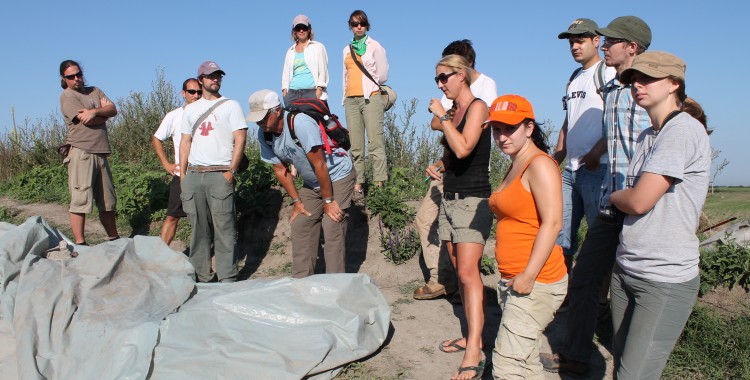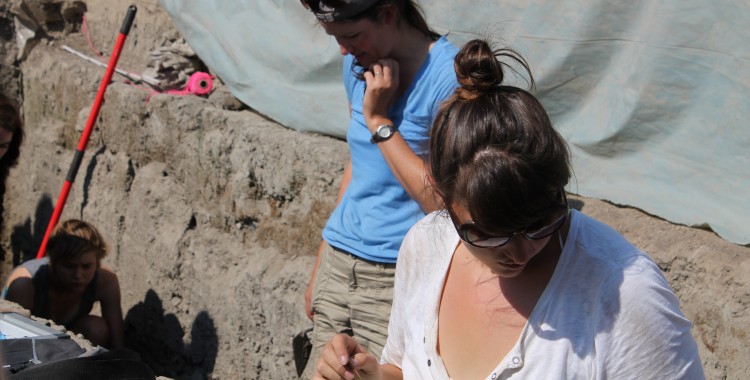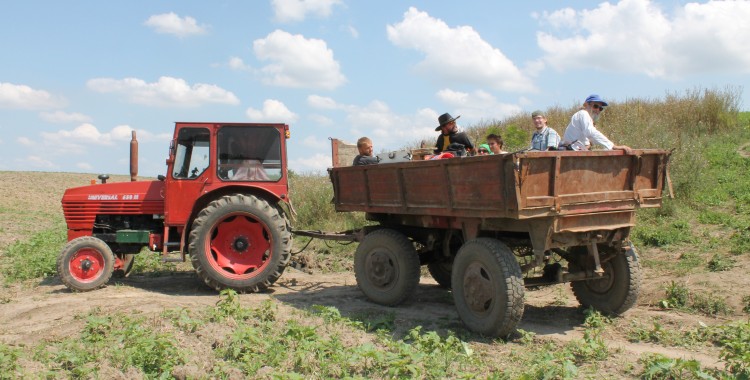After the three day trip to Pecica (Pecska), Romania and very unsettling internet connection problems, we are once again back online and ready to give you an insider look at Bekes 103 cemetery excavations, but first let us tell you about our trip.
This past weekend we have visited our friends at the Pecica archaeological project. This international team is uniting scientists from USA, Romania and Hungary, excavating at Santul Mare (The Big Ditch) site in northwest Romania, on the right bank of the Mures river. The occupation layers of a large fortified tell and adjacent peripheral village span Early and Middle Bronze Age, the Iron Age, and the Middle Ages. We, of course, are primarily interested in the Middle Bronze Age layers, contemporary with our own site and providing interesting regional comparison to the material from Körös region.
Santul Mare has been excavated since the end of 19th century in numerous excavation campaigns. The latest campaign began in 2005, focusing primarily on the Bronze Age occupation layers at the site. In addition to establishing absolute chronology of the time period, project investigates changes in the craft production, trade patterns, and social interactions and norms.
So you can see why BAKOTA team was really excited to put their trowels to the ground at the Pecica tell, even if it was just for a day. But what a day it was! Excavations in the domestic areas are always very different from the mortuary contexts. The amount of cultural material coming from the ground is just A-MA-ZING. Ceramic sherds, animal bones and burnt animal bones, shells, slag, we get all of that at our site as well, but not in such proportions. On the other side, Pecica people do not get beautiful cremations urns that we have. But I digress.
Julia, Justine, Monique and Russell were digging in the 1×10 sondage trench in the west part of the area where an Early Bronze Age house was discovered. A large pit within the structure was full of pig bones. The rest of our team got to dismantle the hardpacked clay house floor dating to the Middle Bronze Age.
Time went flying by, and we were truly sad to leave. Well most of us; Russell, Monique and Alisa were quite excited to take Pecica project very special ride home.
Interestingly, this trip stimulated our interest in our own project. Strong inter and intra settlement inequality so obvious at the Pecica site, and generally in the Maros region, so far appears to be absent just 80 km north, in the Körös region. Thus, we are eager to finally open up our own settlement excavation unit (Block 41) and see how the material coming from it will fit general regional patterns and compare to the cemetery data.
Get excited with us and stay tuned for the updates!





